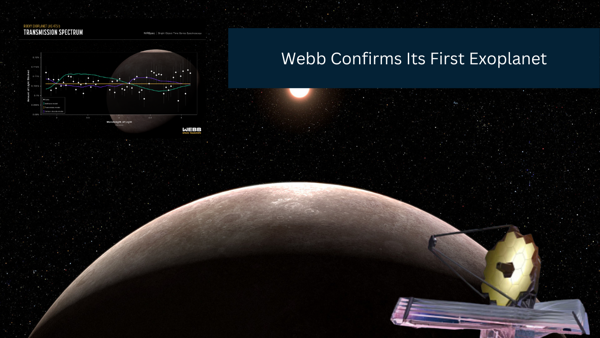
Science & Space
Another Quilt In James Webb's Wing: Confirms Its First Exoplanet 40.7 Light Years Away
The Octane Constellation, which contains the non-navigable hypergiant "South Star," also contains the recently discovered Earth-size exoplanet LSH-475b. Octane Constellation was first introduced by French astronomer "Nicolas Louis de Lacaille" in 1752. Now, exactly 271 years after its discovery, humanity has discovered a new wonder of that constellation, an earth-size exoplanet, LSH-475b, discovered by the most advanced and expensive space telescope, the James Webb Space Telescope.
This exoplanet was discovered by a team led by Kevin Stevenson and Jacob Lustig-Yaeger, who both work at John Hopkins University's applied physics laboratory in Laurel, Maryland. This team first confirmed and did the initial research on the presence of LSH-475b using NASA's dedicated exoplanet-hunting space telescope "Transiting Exoplanet Survey Satellite (TESS)", after getting confirmation from TESS, the team then went for further confirmation and the proper composition of the plant's architecture using the most powerful space telescope "James Webb Space Telescope".
James Webb easily and clearly detected the LSH-475b with only two transit observations using Near-Inferred-Spectrograph (NIRSpec). The discovery of LSH-475b stunned the astronomical community because the planet is rocky and tidally locked to its parent star, red dwarf LSH-475, and it is 99% the size of Earth.
However, its atmospheric composition has not been clearly detected by scientists even after analyzing its transmission spectrum. Some scientists on the team claim that the planet has no atmosphere, while others claim that the atmosphere is entirely composed of carbon dioxide. Because the atmosphere is entirely composed of carbon dioxide, scientists are finding it difficult to reach a definitive conclusion. Furthermore, scientists have demonstrated conclusively that there is no presence of methane in the atmosphere, according to the present spectrum result. The team has decided to conduct a detailed spectrum analysis to detect the presence of pure carbon dioxide in its atmosphere, and they will revisit the exoplanet in the coming summer.
Although LSH-475b is rocky, its equilibrium temperature of 586Kelvin (313°C, 595°F) makes it unsuitable for life, at least not life like ours. The main reason for its temperature is its proximity to its host star; it only takes two days to complete a full revolution around its star, and the planet is tidally locked, which is why one of its sides is always bathed in charged particles. If there is a possibility of having any obscure micro organism that would be on its side which is opposite of its sun.
This is the second time NASA has discovered an exoplanet that is nearly the size of our planet. NASA is working tirelessly to discover various types of exoplanets in order to decode the discovery of any planet's existence and its birth anomaly, which has yet to be deciphered by any scientists.
Related topics: NASA's Another Spectacular Discovery: TESS Discovers Second Earth-Size Planet in Habitable Zone of TOI-700
Related topics: The Incredible Rare Celestial Phenomenon: The Comet Visible From The Earth For The First Time In 50,000 Years

0 Comments